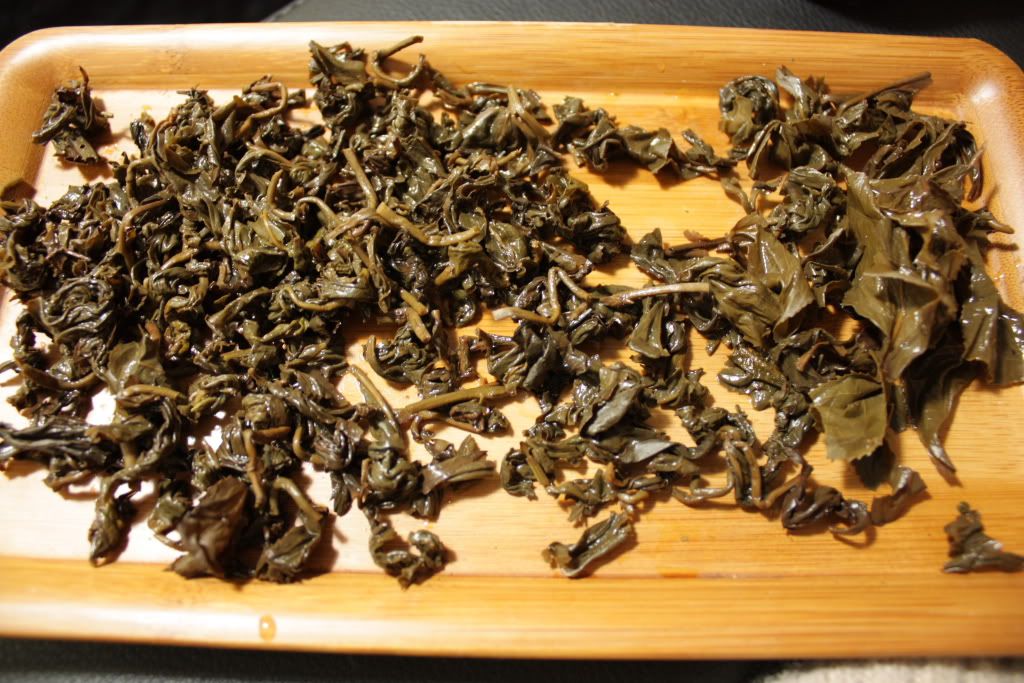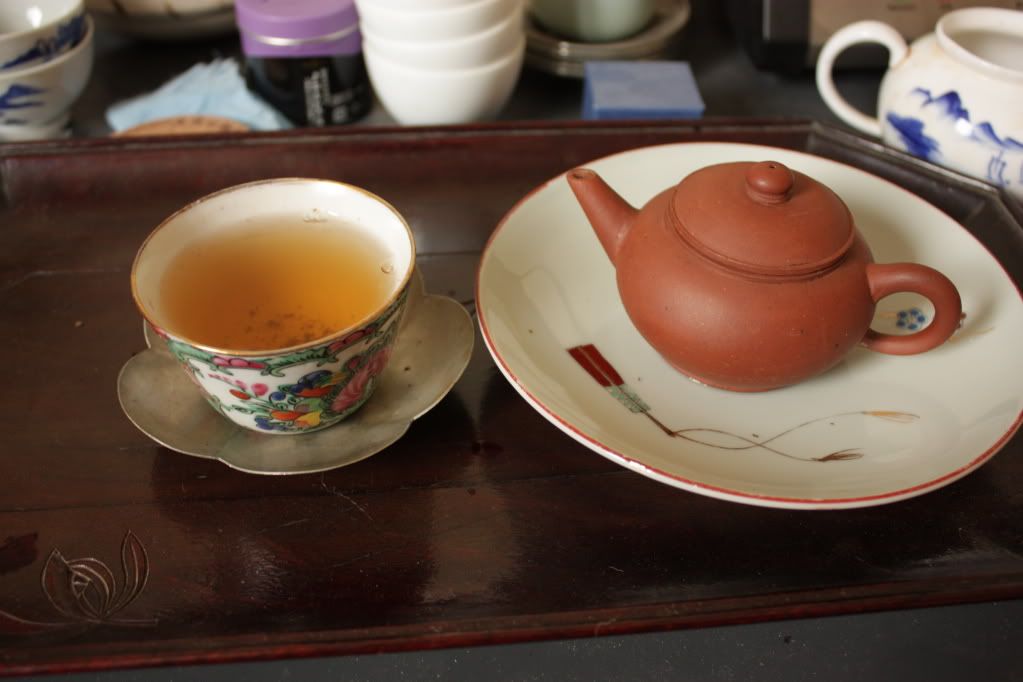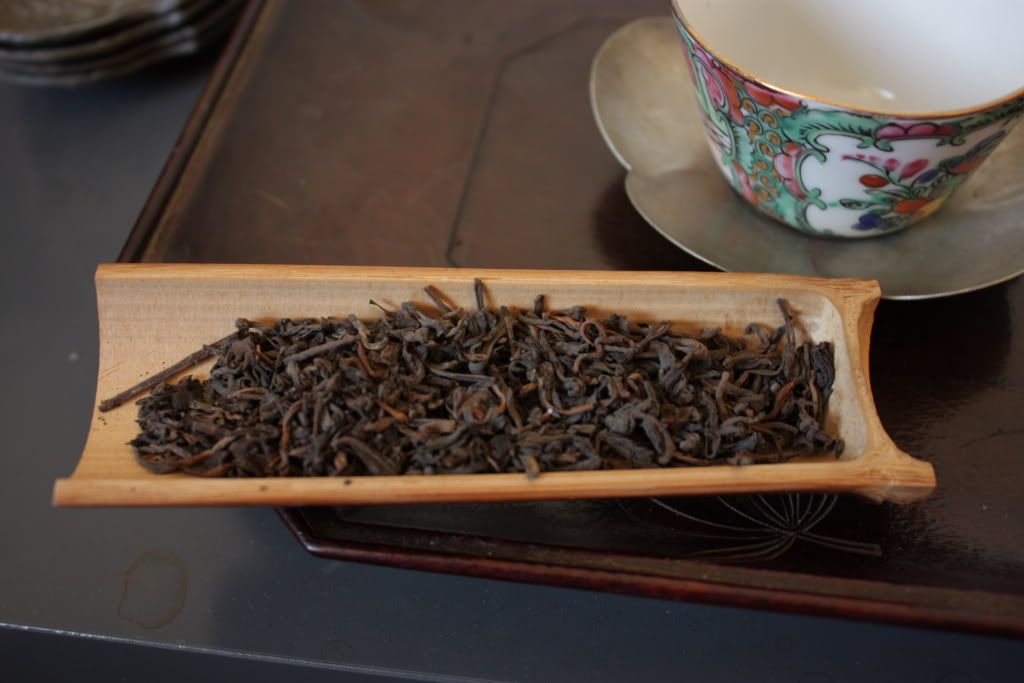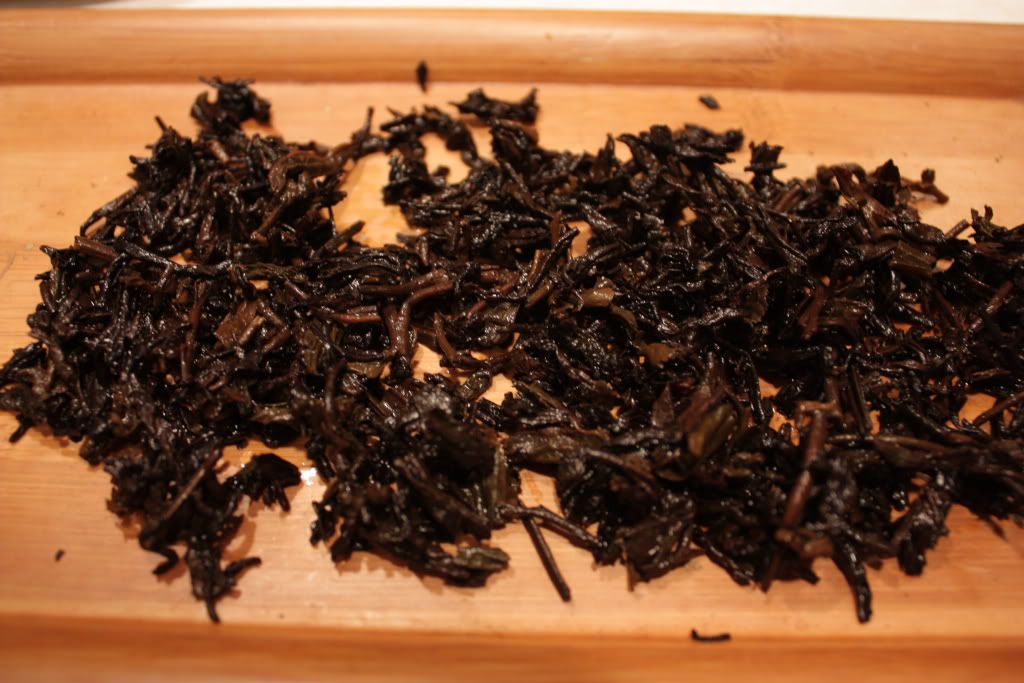I don’t know if it has anything to do with my obsessive blogging about aged oolong in the last two years, but it seems as though there have been many more teas of this type available than even just a year or two ago. I’ve tried very few of these, and I only remember the Red Blossom aged baozhong relatively fondly. Recently I got a sample of Camellia Sinensis’ 1987 Hualien aged oolong from two different sources, so I figured I’d try it.
This is an odd tea, and I’ve had it twice now. The first time I tried it I felt it a little strange, and didn’t think it tasted like it aged much at all. I added more leaves today, and figured I’d try it again

What’s strange about this tea is that there is a very odd bitterness to it, especially right away, but it persists. There’s a slight sourness in the tea, which is fairly normal for an aged oolong, especially one that is of lower roast like this. Bitterness, however, is not usual, and certainly should not be expected in an oolong that is over 20 years old. While I wouldn’t say it’s a definite sign that bitterness must be gone, I’ve yet to try a good aged oolong that is as bitter as this.
That’s what prompted me to say that this is not really aged the first time, only roasted. Today, however, as I brewed it with more leaves, the colour of the tea approaches something more familiar

There’s that aged taste to it this time, in the back, while the bitter and sour mix still persists. In fact, the bitterness remained for quite a while, for ten or maybe more infusions. It’s an odd thing, because I couldn’t quite pinpoint where it was coming from. The bitterness did seem to fade though, and when I got to maybe the 20th infusion or so, it was mostly gone, while the sweetness that I am familiar with still remains. When my wife tried this tea, a good three or four hours after I first started (on and off) the tea is mostly just sweet.
I came up with a theory that seems to fit the facts — upon inspection of the spent leaves, there seems to be a combination of two kinds of teas or even more that were in this tea

Some of the leaves, the ones on the right, are full leaves, big, and easy to open. The rest, on the left, are much more mushy and not easy to unfold — they fall apart instead of being opened. Those seem to be more like an aged oolong, whereas the leaves on the right are not — rather, they are just like any random oolong you can find from Taiwan. This is some sort of a mixture. It could very well have happened by accident — lots of bags of oolong float around these farms or stores, and it was possible that they simply mixed it up.
It’s much harder to tell whether this is a mix or not from the dry leaves, but there’s definitely a bit of a mix of colours going on

Maybe I should try to pick out the weird looking leaves next time I try this, and see if I can get a purer taste.


















Yeah whisky prices have been leaking too, as well as luxury watches. I wrote a post maybe a decade ago…